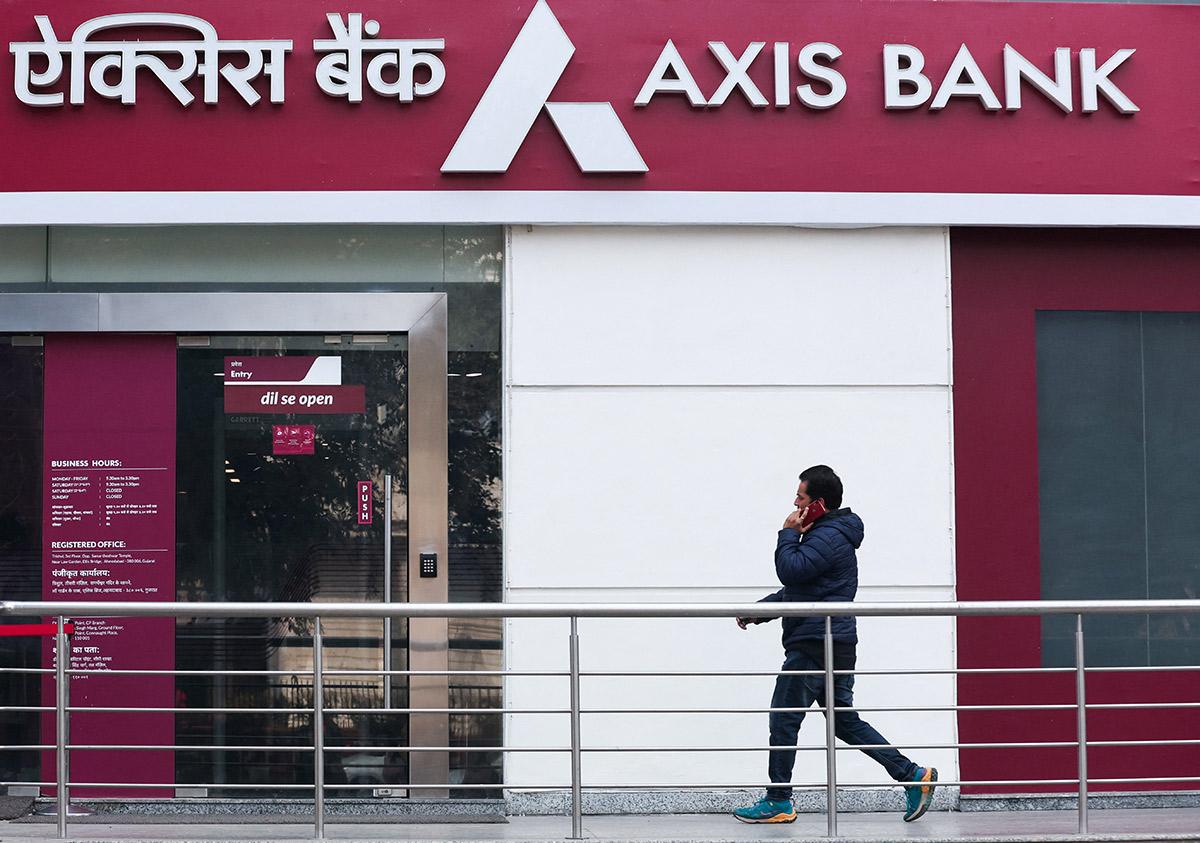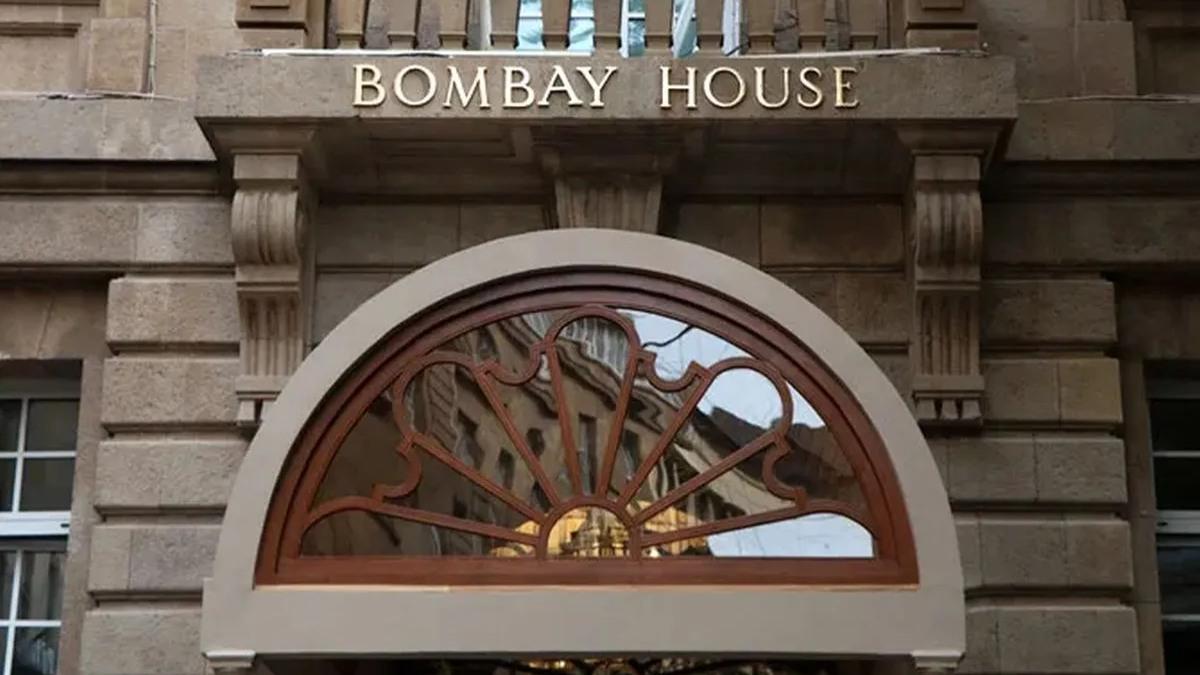Axis Bank reported a sharp drop in net profit in the second quarter of financial year 2026 (Q2FY26) on higher provisions and weak operating profit growth while revenue growth was moderate.

Photograph: Anushree Fadnavis/Reuters
But loan growth and deposit growth improved to double-digits year-on-year (Y-o-Y) and asset quality also improved with the gross non-performing loan or NPL ratio moving down.
While net interest margin (NIM) declined marginally, it was better than consensus.
Slippages also declined. Credit costs for the quarter stood at Rs 3,500 crore (around 130 basis points of loans, annualised) for Q2FY26, down from 150 basis points in Q1FY26.
The reported Q2FY26 net profit was Rs 5,090 crore, down 26 per cent Y-o-Y.
The net interest income was up 1.4 per cent Q-o-Q (up 2 per cent Y-o-Y) to Rs 13,740 crore.
NIM contracted 7 basis points Q-o-Q to 3.73 per cent.
The provisioning stood at Rs 3,550 crore with a one-time standard asset provisioning of Rs 1,231 crore following an RBI inspection related to two discontinued crop loan variants.
The loan book grew 11.7 per cent Y-o-Y (up 5.4 per cent Q-o-Q).
Deposits grew 10.7 per cent Y-o-Y (up 3.6 per cent Q-o-Q), and credit deposit ratio (CD ratio) increased to 92.8 per cent vs 91.2 per cent in Q1FY26.
The casa mix was stable at 40 per cent.
Fresh slippages stood at Rs 5,696 crore (vs Rs 8,200 crore in Q1FY26), with a technical impact of Rs 1,512 crore (44 per cent Q-o-Q decline).
Adjusted for this technical impact, gross slippages stood at Rs 4,180 crore.
The gross non-performing assets or GNPA and net NPA ratios improved 11 basis points and 1 basis point respectively Q-o-Q to 1.46 per cent and 0.44 per cent respectively.
The provision coverage ratio moderated 103 basis points Q-o-Q to 70.5 per cent.
Other income declined 1.4 per cent Y-o-Y and down 9 per cent Q-o-Q to Rs 6,630 crore.
Treasury gains stood at Rs 498 crore vs Rs 1,420 crore in Q1FY26.
Total revenue grew 1 per cent Y-o-Y to Rs 20,370 crore.
The operating expenditure grew 5 per cent Y-o-Y to Rs 9,960 crore driven by priority sector lending certificate (PSLC) related costs (Rs 948 crore), of which Rs 474 crore was recognised in Q2FY26.
The PPoP declined 3 per cent Y-o-Y to Rs 10,410 crore, while the cost to income ratio rose to 48.9 per cent. Retail loans grew 2 per cent Q-o-Q, while the corporate book grew 10.7 per cent Q-o-Q, and SME loans rose 19 per cent Y-o-Y (8.8 per cent Q-o-Q).
Management expects advances to grow 300 basis points faster than the industry over the medium term.
Management says delinquency trends in personal loans, credit cards, and microfinance segments are stabilising, with the bank resuming card distribution.
Restructured loans stood at 0.10 per cent. Overall credit cost stood at 0.73 per cent.
The CAR and CET-1 stood at 16.55 per cent and 14.43 per cent respectively. Average Liquidity Coverage Ratio stood at 119 per cent and risk weighted asset levels have increased Q-o-Q, reflecting a 5 per cent rise in risk intensity due to a shift toward SME exposure.
The higher provisions during this quarter were primarily due to erosion in security value for 1-2 accounts, aging-related provisions, and higher standard provisions as advised by the RBI.
RBI has directed the bank to make a static provision of Rs 1,231 crore, representing 5 per cent of the total exposure on two crop loan variants.
This provision is expected to reverse once the book runs down by March’28. To offset the impact, the bank has made priority sector lending certificate or PSLC purchases.
The PSLC cost for FY26 stood at Rs 948 crore, of which Rs 474 cr was recognised in Q2FY26, the remaining Rs 474 crore will be charged over the next two quarters with Rs 237 crore recognised in Q4.
The bank expects to gradually benefit from lower risk weights and further expansion in the retail book.
Guidance is that the credit to deposit ratio will remain within plus/minus 2 per cent of the current 92 per cent.
Business growth has gained traction, with deposits expected to grow at a healthy rate, while the bank aims to outperform systemic credit growth by 300 basis points annually over the medium term even as it expects further repo rate cuts.
The share has moved up on the results and analysts seem to be net positive about the stock.
Disclaimer: This article is meant for information purposes only. This article and information do not constitute a distribution, an endorsement, an investment advice, an offer to buy or sell or the solicitation of an offer to buy or sell any securities/schemes or any other financial products/investment products mentioned in this article to influence the opinion or behaviour of the investors/recipients.
Any use of the information/any investment and investment related decisions of the investors/recipients are at their sole discretion and risk. Any advice herein is made on a general basis and does not take into account the specific investment objectives of the specific person or group of persons. Opinions expressed herein are subject to change without notice.




